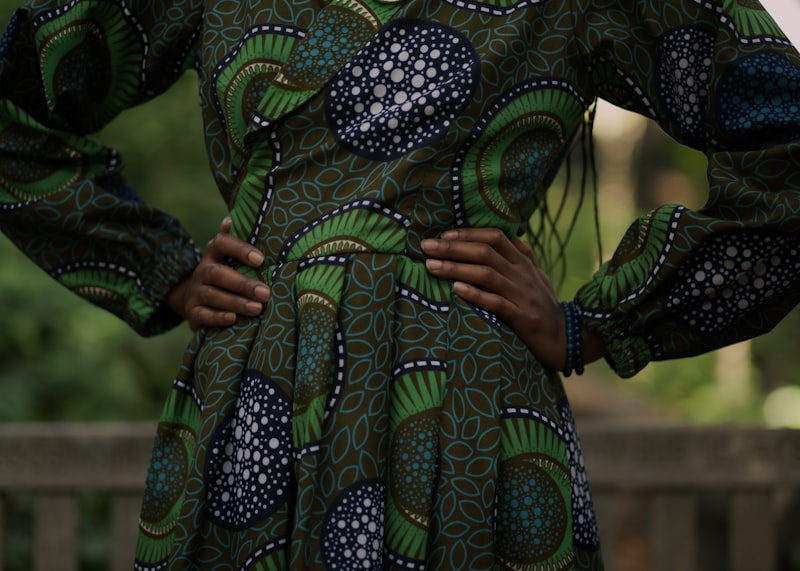Customizing Your Dress: Mixing Traditional and Contemporary Fabrics
Customizing Your Dress: Mixing Traditional and Contemporary Fabrics
Introduction to Customizing Your Dress
In today's fashion world, customizing your dress has become a popular trend that allows individuals to express their unique style. One of the most exciting approaches is the art of mixing traditional and contemporary fabrics. This article will explore the benefits of customization, tips on choosing the right fabrics, and how to seamlessly blend these two worlds to create a stunning and personal dress.
Why Customize Your Dress?
Customization not only enhances the appeal of your outfit but also ensures that it reflects your personality and taste. Here are a few reasons why customization is a great choice:
- Unique Style: A customized dress is one-of-a-kind, offering you the opportunity to stand out at any event.
- Perfect Fit: Tailoring your dress ensures a perfect fit that flatters your body type.
- Personal Touch: Incorporating fabrics that have personal significance can add emotional value to your outfit.
Understanding Traditional and Contemporary Fabrics
To effectively mix fabrics, it’s essential to understand what traditional and contemporary fabrics entail:
Traditional Fabrics
Traditional fabrics often reflect cultural heritage and craftsmanship. Examples include:
| Fabric | Characteristics |
| Silk | Luxurious, soft, and often used in celebration wear. |
| Brocade | Features intricate patterns and designs, perfect for elegant occasions. |
| Cotton | Breathable and comfortable; widely used in ethnic wear. |
Contemporary Fabrics
On the other hand, contemporary fabrics are modern and innovative, often incorporating new technologies, styles, and textures. Examples include:
| Fabric | Characteristics |
| Polyester | Durable and wrinkle-resistant, suitable for daily wear. |
| Jersey | Stretchy and comfortable, ideal for casual dresses. |
| Luxe Satin | Offers a high-shine finish, perfect for evening wear. |

Tips for Mixing Traditional and Contemporary Fabrics
Successfully blending traditional and contemporary fabrics requires careful consideration. Here are some tips to help you navigate this creative process:
Choose a Common Color Palette
Selecting fabrics that share a common color palette can help unify the look. For example, if you are using a vibrant traditional fabric, pairing it with a contemporary fabric in a similar shade can create a harmonious design.
Balance Pattern and Texture
When mixing fabrics, consider the patterns and textures. If your traditional fabric is heavily patterned, opt for a contemporary fabric with minimal design to avoid overwhelming the overall look.
Experiment with Layers
Using layers can enhance your dress's visual interest. A traditional fabric can serve as an inner lining or an overlay, while contemporary fabrics can dominate the outer layer for a fresh twist.
Where to Source Fabrics
Finding the right fabrics for your customized dress can be an adventure in itself. Here are several places to explore:
- Fabric Stores: Local fabric stores often carry both traditional and contemporary options.
- Online Retailers: Websites like Etsy or Fabric.com offer a wide range of fabrics from sellers worldwide.
- Fashion Markets: If you're looking for unique items, visiting local fashion markets can help you discover exclusive fabrics.
Creating Your Custom Dress: Step-by-Step Guide
Now that you understand the types of fabrics and how to blend them, let’s walk through the steps for creating your custom dress:
Step 1: Design Your Dress
Sketch your dress design, considering the styles, lengths, and overall silhouette you are aiming for. This is where you can decide how traditional or contemporary you want the dress to be.
Step 2: Choose Your Fabrics
Select your traditional and contemporary fabrics based on the design you've created. Consider the occasion for which the dress will be worn to ensure you choose suitable materials.
Step 3: Create a Sample
Before cutting into your chosen fabrics, it's wise to create a sample of the dress using cheaper materials. This allows you to test out the design and adjust sizing or styling before proceeding with your final fabrics.
Step 4: Cut and Sew
With your sample created, it’s time to cut your final fabrics. Follow the design carefully, and don’t hesitate to make adjustments if needed.
Step 5: Finishing Touches
After assembling the dress, add any embellishments, such as embroidery or embellishments that resonate with either the traditional or contemporary aspect.
Conclusion
Customizing your dress by mixing traditional and contemporary fabrics can yield remarkable results, allowing personal expression while embracing diverse styles. As you navigate this creative process, remember the importance of selecting the right color palette, balancing patterns and textures, and sourcing materials from reliable places. Embrace the journey of creating a unique dress that tells a story about you, blending rich tradition with modern aesthetics.
In summary, customization offers the opportunity to delve into the realms of traditional and contemporary fashion, enabling you to craft a dress that is uniquely yours. Remember to stay open-minded, experiment with styles, and most importantly, have fun with the process!
